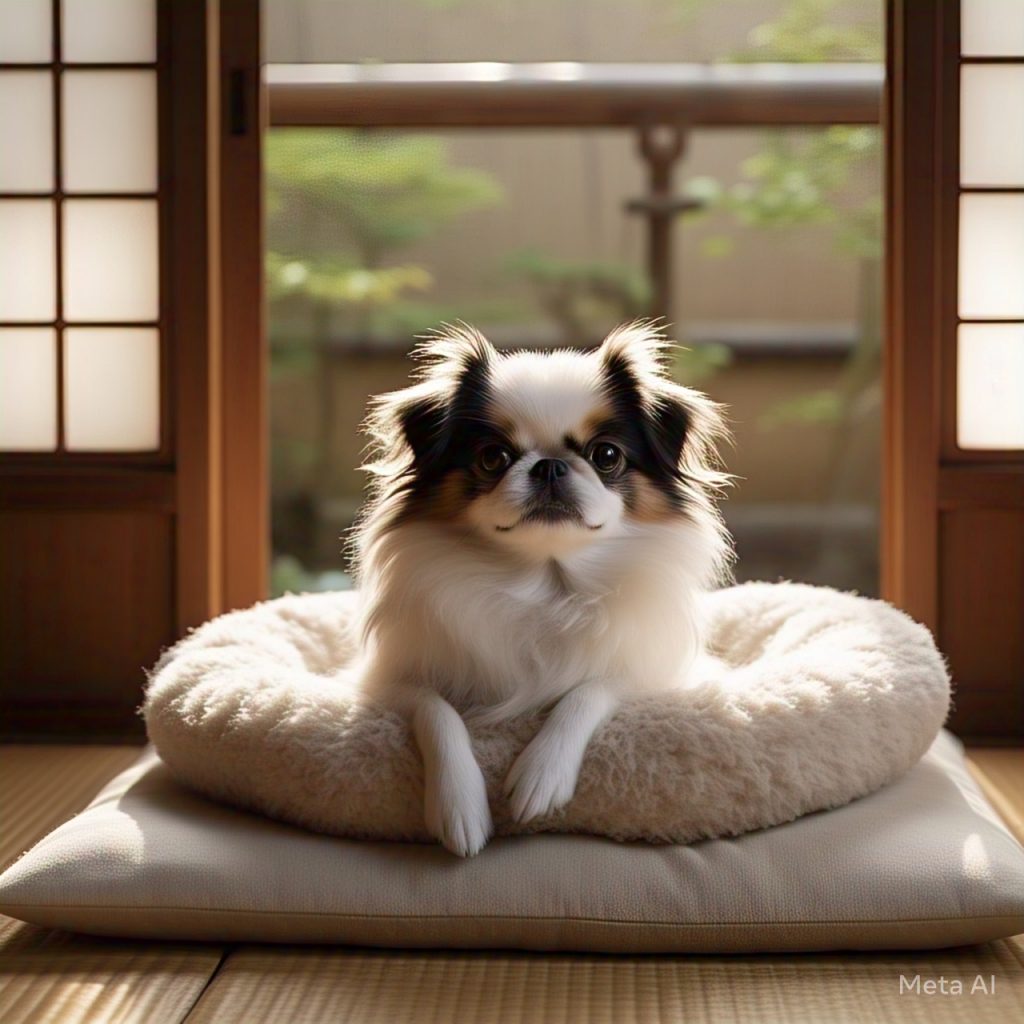The Japanese Chin, also known as the Japanese Spaniel, is a toy breed known for its aristocratic elegance, affectionate nature, and distinctive “feline-like” behavior. Despite its name, this breed has historical ties to both Japan and China and has been a favorite of nobles and royalty for centuries.
In this comprehensive guide, we’ll explore the history, personality, care needs, training tips, and health concerns of the Japanese Chin. Whether you’re considering adopting one or are simply fascinated by this charming breed, this article will provide an in-depth breakdown of everything you need to know.
Origins and History of the Japanese Chin
From China to Japan: A Royal Heritage
The Japanese Chin’s origins can be traced back over 1,000 years to ancient China, where they were cherished as lap dogs of the Chinese aristocracy. It is believed that these dogs were gifted to the Japanese imperial court, where they were selectively bred and refined into the breed we know today.
During the Edo period (1603-1868), Japanese nobility treasured the breed, treating them as sacred companions. The Japanese Chin was not considered a “dog” (inu) but rather a distinct entity, symbolizing grace and sophistication. In the 19th century, the breed was introduced to Western society, gaining popularity in Europe and the United States.
Physical Characteristics of the Japanese Chin
Size and Appearance
The Japanese Chin is a toy breed that typically weighs between 4 to 9 pounds (1.8 to 4.1 kg) and stands 8 to 11 inches (20 to 28 cm) tall.
Coat and Colors
- The breed has a long, silky, and flowing coat with feathering on the ears, legs, and tail.
- Common coat colors include black and white, red and white, and tricolor (black, white, and tan).
Unique Facial Features
- A short, broad muzzle and a slightly upturned nose, giving them a distinctive appearance.
- Large, expressive dark eyes that convey an intelligent and affectionate nature.
- A well-defined mane around the neck, resembling a lion’s ruff.
Temperament and Personality Traits
A Cat-Like Companion
One of the most fascinating aspects of the Japanese Chin is its feline-like behavior. Unlike most dogs, they:
- Use their paws to wash their faces.
- Enjoy perching on high surfaces, like the backs of couches.
- Are independent yet affectionate, much like a cat.
Affectionate and Loyal
- They are incredibly devoted to their families and form strong bonds with their owners.
- While friendly with strangers, they tend to be more attached to one or two people.
Playful Yet Calm
- While they have bursts of energy, they are not hyperactive.
- They enjoy playtime but also love curling up on a lap for hours.
Intelligent and Stubborn
- Highly intelligent, but their stubborn streak can make training a challenge.
- Respond best to positive reinforcement methods.
Training a Japanese Chin
1. Socialization is Key
Early exposure to different people, sounds, and environments helps prevent shyness.
2. Positive Reinforcement Works Best
Use treats, praise, and gentle encouragement rather than harsh corrections.
3. House Training Challenges
Due to their small size, they can be difficult to house-train, so patience and consistency are essential.
4. Basic Commands and Tricks
Japanese Chins enjoy learning tricks, especially when they receive rewards. Teaching them commands like “sit,” “stay,” and “come” will help reinforce good behavior.
Health Concerns and Lifespan
Common Health Issues
Like all purebred dogs, Japanese Chins are prone to specific health concerns:
- Brachycephalic Airway Syndrome – Their short muzzle can lead to breathing difficulties.
- Heart Conditions – They may develop mitral valve disease, common in small breeds.
- Eye Problems – Their large eyes make them prone to injuries and infections.
- Patellar Luxation – A knee condition that can cause limping or discomfort.
- Obesity – Overfeeding can quickly lead to weight gain, worsening other health issues.
Lifespan
On average, a Japanese Chin lives 12 to 14 years, though some can reach 16 years with proper care.
Grooming and Care Needs
1. Coat Maintenance
- Their silky coats require brushing at least 2-3 times per week to prevent tangles and mats.
- They shed moderately but require more frequent grooming during seasonal changes.
2. Bathing and Hygiene
- Bathing once a month is sufficient unless they get particularly dirty.
- Pay attention to cleaning their facial folds to prevent irritation.
3. Dental Care
- Small breeds are prone to dental disease, so daily tooth brushing is recommended.
4. Nail Trimming and Ear Cleaning
- Trim their nails every 3-4 weeks to avoid overgrowth.
- Clean their ears regularly to prevent infections.
Diet and Nutrition
1. High-Quality Dog Food
- Opt for a small-breed formula with balanced protein, fat, and fiber.
- Avoid artificial additives and low-quality fillers.
2. Portion Control
- Overfeeding can lead to obesity, which can strain their small frame.
- Follow a vet-recommended feeding schedule, typically 1/4 to 1/2 cup of kibble per day, split into two meals.
3. Healthy Treats
- Offer fresh fruits (apples, blueberries) and veggies (carrots, green beans) in moderation.
Are Japanese Chins Good for First-Time Owners?
✅ Yes, if:
- You want a low-maintenance, affectionate companion.
- You live in an apartment or small home.
- You enjoy a calm and quiet pet.
❌ No, if:
- You want a highly energetic dog for outdoor activities.
- You dislike regular grooming.
- You’re away from home for long hours (they don’t tolerate loneliness well).
Final Thoughts: Is the Japanese Chin Right for You?
The Japanese Chin is a unique and charming breed, perfect for those who appreciate a gentle, affectionate, and low-energy companion. While they have some grooming and health needs, their intelligence, loyalty, and aristocratic grace make them a delightful pet for the right owner.
If you’re looking for a lap dog with personality, the Japanese Chin might just be the perfect match!

